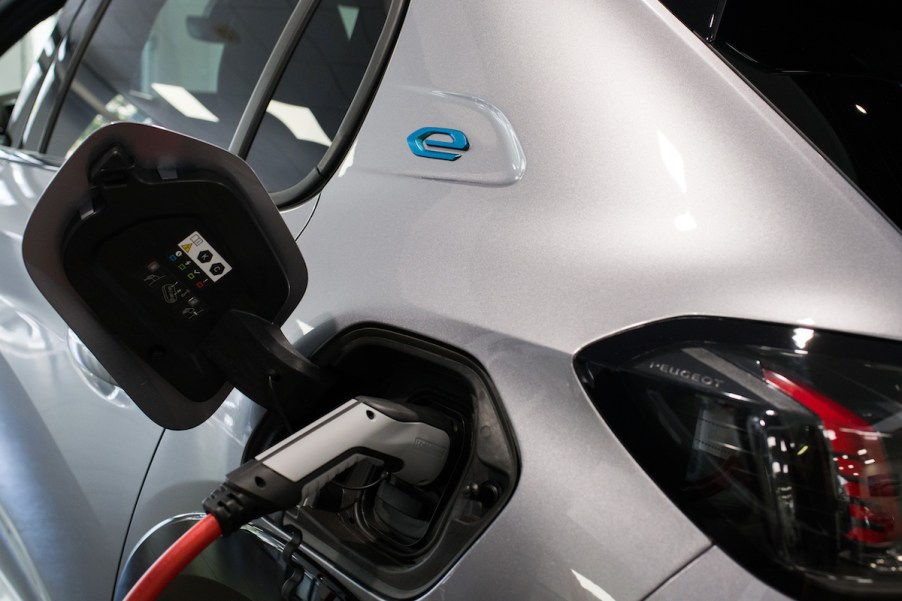
8 Ways to Improve an EV’s Range
Nowadays, you can buy an EV that can go 350 to 520 miles on a single charge. But not all of them have that capability. Some can only go around 250 miles or less, making things tricky when traveling long distances. This also triggers range anxiety for those wanting to purchase an EV but can’t seem to take that final step. Here are eight ways you can improve an EV’s range.
What is range anxiety?

Range anxiety is what some people get when they think of buying an electric vehicle or go on a longer than normal road trip. They worry the car’s range is not good enough and will suddenly shut down on the highway with no charging stations nearby to keep replenish their charge.
However, there are a few ways to help keep an electric vehicle going so you don’t have to worry about a battery running out of charge. According to Electric Cars FAQ, here are eight tips that could help.
1. Set up a proper charging routine to improve an EV’s range
It’s best to always set out on a trip in your EV with a fully charged battery. This means you must ensure you’re charging it up every night. Get yourself into a routine, so it becomes second nature. If you try to push your vehicle to perform with a low battery, you’re putting unnecessary strain on it, which will cause it to lose the ability to store higher amounts of energy after a while.
2. Use high-quality tires
Always ensure the EV tires are in good shape and have the appropriate amount of air in them. If they’re going bad, don’t continue driving on the tires. Replace them immediately. Your vehicle will have to work harder, using more energy from the battery.
3. Drive on flat and smooth surfaces as much as possible
Another way to shorten your battery’s range is by driving on steep, rugged terrain. The more this happens, the more likely your battery won’t reach a full charge when you charge it overnight. Plan your travel routes by choosing smoother and flatter roads to drive on if possible. This way, you keep the battery running strong, and you won’t have to worry about decreasing the vehicle’s range while on the road.
4. Avoid driving too fast or trying to accelerate too quickly
Whenever you try to accelerate faster to speed down the road, you’re using up more energy than necessary. This will deplete your vehicle’s battery quicker than expected, causing it to need charging more often. A Tesla Model 3, with a driving range of 240 when driving 65 mph will drop to 231 to 232 when driving 70 to 80 mph.
5. Don’t make too many short trips
This can get confusing because we often hear that electric vehicles are perfect for short-distance driving. In fact, it’s typically harder on gasoline-powered cars to take shorter trips because you’re not letting the engines warm up, and the battery isn’t getting a decent charge from a short-term drive.
EVs don’t have that problem. But, if you are worried about the vehicle’s driving range, you might want to combine your errands in one day instead of driving several short-term ones to keep your battery working stronger. It will shorten your amount of time on the road as well if you do things along the way you would have otherwise done later that same day or the next day.
6. Don’t delay battery repair to improve an EV’s range
It’s normal for electric car batteries to lose capacity over time. You will usually notice some signs when this starts to show up. The main one is when you’re vehicle isn’t holding as much of a charge as it once did.
When you first notice your battery isn’t entirely performing as it should, have it checked out and repaired quickly. The longer you wait, the more likely you’ll have to pay a hefty repair bill that you weren’t prepared for.
7. Reduce the weight inside of the vehicle
For the most part, electric vehicles are heavier than gas cars of the same size due to the large electric batteries installed in EVs. These batteries are configured to handle the weight, though. However, when you add more weight to it, like extra camping equipment and luggage, you’re placing more pounds on the tires, which makes the motor work harder. If you need to haul heavier items with you, try using another vehicle to keep your EVs battery working in good shape.
8. Use regenerative braking
According to Car Zing, regenerative braking is essential to owning an electric vehicle. In a sense, you’re charging up your battery while using this feature. For example, when you stop at a red light and take your foot off the accelerator, the regenerative braking kicks in by slowing down the motor. That energy is then stored in the battery, ready to go when the light turns green. Without that, the battery loses its charge.
While range anxiety is real, it doesn’t have to keep you from taking the plunge and buying an electric vehicle, especially nowadays when gas prices are eating up our pocketbooks. Use these steps to keep your battery charged and improve your EV’s range so you don’t have to worry as much about getting stranded somewhere.


